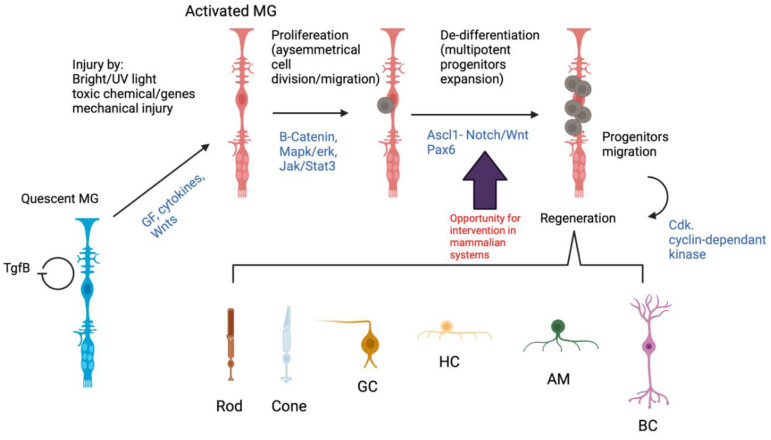Figure 2.
Müller glia regeneration-associated molecular cascades in zebrafish. A hypothetical pathway representing Müller glia activation in response to injury and the sequence of events that leads to retinal regeneration in zebrafish (black text). Müller glia are quiescent in absence of injury, a process regulated by TgfB/Smad pathway. Upon injury, Müller glia are encouraged start reprogramming and enter the cell cycle in a complex of events involving B-catenin, Mapk/erk and Jak/Stat3 signalling pathways, which stimulate proliferation. These pathways stimulate injury-dependant Ascl-1 expression, which regulates the generation of Müller glia-l-derived progenitor cells (MGPCs). Those sequences of events also occur in mammalian systems. However, the MGPCs in zebrafish retina expand and migrate to regenerate the injured retina. This regeneration potential is inefficient in mammalian systems. Intervention at key steps in the zebrafish Müller glia reprogramming might stimulate the regeneration potential in mammalian Müller glia (purple arrow).

